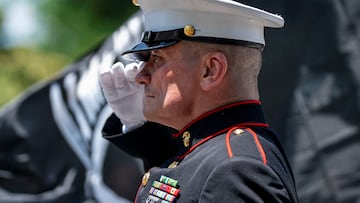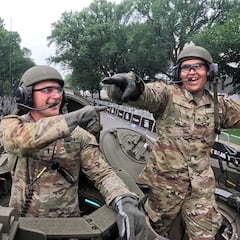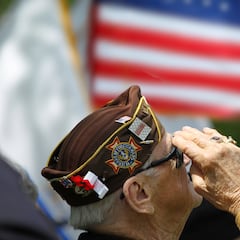Not the same: This is the difference between Memorial Day, Armed Forces Day and Veterans Day
The United States has two days dedicated to honor the men and women who have served in the nation’s armed forces but they commemorate different things.


The men and women of the nation’s Armed Forces put their lives on the line to uphold our hard-won freedoms. In recognition of their service the United States honors them during two public holidays, one in the spring and the other in the fall.
It’s not just the time of year that differentiate these commemorations, but also their purpose. While Memorial Day was established to honor those who died in the line of duty while defending their country, Veterans Day is meant to be a joyous commemoration of the men and women who have served in the Armed Forces.
Memorial Day got its start at after the American Civil War. It was given permanent status on the public calendar in 1971 and is celebrated on the last Monday of May. Veterans Day first started out as Armistice Day to celebrate the end of World War I on Nov. 11, 1918. However, after further global turmoil drew the US into other conflicts it was repurposed to honor all veterans.
Memorial Day fast facts
The Veterans Affairs Administration traces the history back to 1869, when the Grand Army of the Republic, an organization made up of Union veterans, established “Decoration Day.” On Decoration Day, those around the country were encouraged to cover the graves of those who died in the Civil War with flowers. The date of 30 May was chosen as it was believed that “flowers would be in bloom all over the country.”
More widespread celebration of Memorial Day began after World War I. Over 116,000 US soldiers died during World War I, and while the US and its allies were victorious the country was in mourning.
Thank you to all who sacrificed for us and our freedom. We remember you this Memorial Day weekend. Sending love to their families and loved ones. pic.twitter.com/bqfZJigyov
— Adam Sandler (@AdamSandler) May 25, 2025
Veterans Day fast facts
Similarly, the history of Veterans Day is tied to World War I. In November 1919, President Wilson announced a public holiday to celebrate the armistice that ended the war. During his proclamation, President Wilson highlighted the victories winning the war brought but also reminded the world that “To us in America, the reflections of Armistice Day will be filled with solemn pride in the heroism of those who died in the country’s service.”
World War I was once dubbed “the war to end all wars.” In 1938, years before the US joined World War II, the US Congress formally established “Armistice Day” as a day to celebrate veterans of World War I and the hope for world peace. However, after the US was dragged into World War II and the Korean War shortly after, “Armistice Day” as a name no longer had the same significance.
Related stories
Calls from the public and the military to establish a day to celebrate all veterans grew louder, and in 1954 Congress altered the “Act of 1938 by striking out the word “Armistice” and inserting in its place the word “Veterans.” That same year in 1954, President Dwight D. Eisenhower, a former military official himself proclaimed that Veterans Day would be celebrated annually on Nov. 11.
Armed Forces Day fast facts
Armed Forces Day is celebrated on the third Saturday in May – on May 17, 2025, this year – and honors service members across the six branches of the military within the US Department of Defense: the US Army, US Navy, US Marine Corps, US Air Force, the US Coast Guard and the newest branch of service the US Space Force.


Complete your personal details to comment